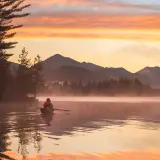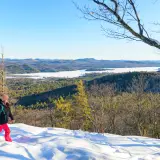Submitted by guest blogger Eileen Mowrey
Giant, rugged and alluring, the Adirondack High Peaks have an almost magnetic draw for adventurous hearts. Approaching these mountains from the Adirondack Hub gives hikers one of the most remote access points there is, heightening the unique wilderness experience. There is more to these mountains than just beauty and intrigue, though. Towering at over 4,000ft, the High Peaks – often referred to as the 46 – are incredibly challenging, featuring steep inclines, rough trail, long miles, and, especially in the winter, difficult conditions. Before attempting a winter hike in the High Peaks, consider the following six tips.
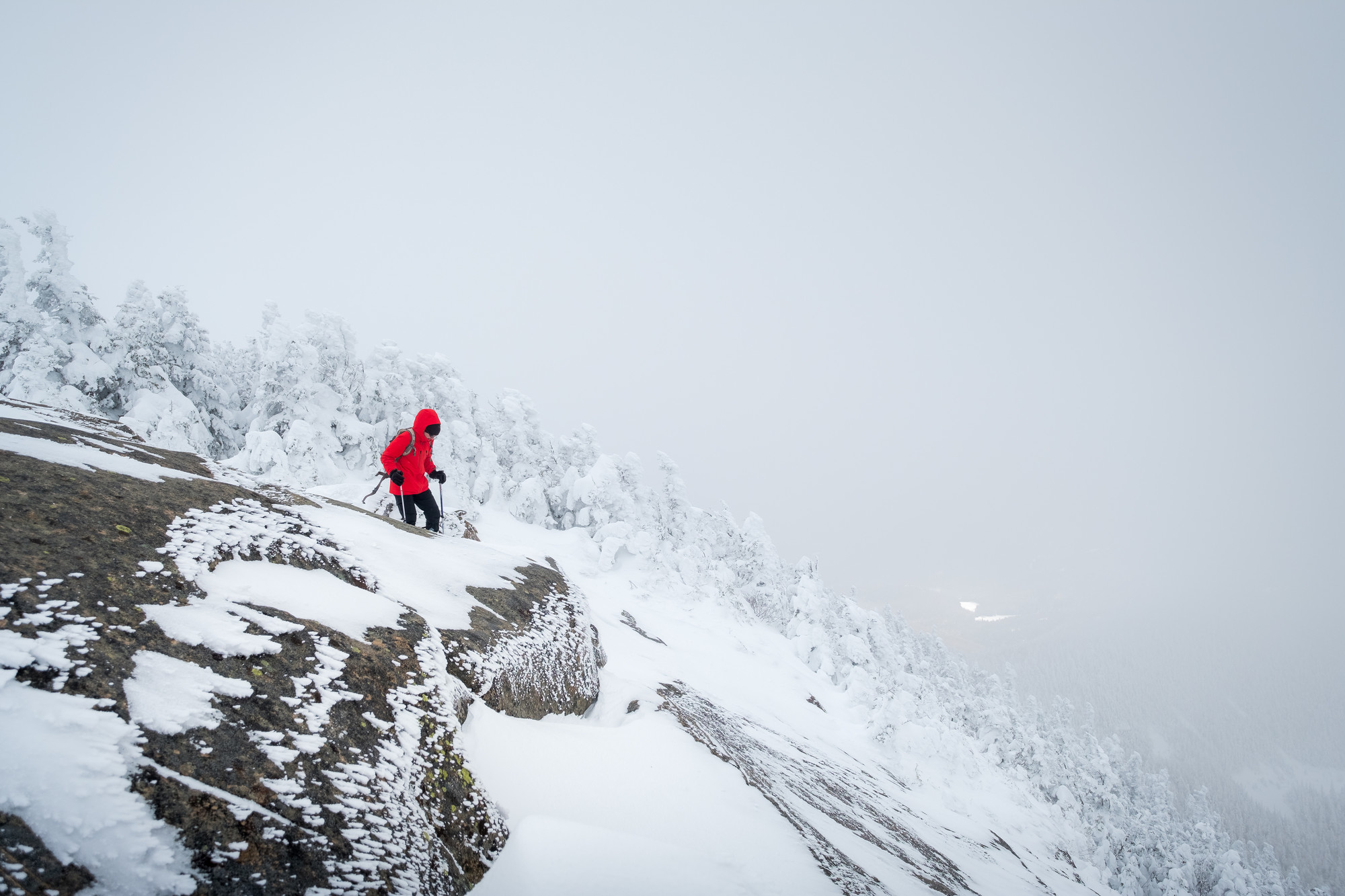
1. Choose the right hike for you
There are lots of wonderful ways to experience the High Peaks. Hiking one of New York’s tallest mountains might not be the best option for you. Hiking outside your comfort zone can be dangerous in any season, but it is especially risky in the winter when snow, ice, and cold temperatures make for difficult hiking conditions. Hiking the High Peaks in winter is something that only experienced hikers should attempt. Even experienced hikers should have a few smaller winter hikes under their belt before they set their sights on a 46er. If you are relatively new to hiking, try one of the smaller mountains in the region. It’s a great way to gain experience and many of these smaller peaks offer great views of the High Peaks. In fact, since so many of the higher elevation summits are socked in with clouds in the winter, you might find better views atop shorter summits! Still feeling a little unsure? Hire a local guide to help you find the best hike for you.
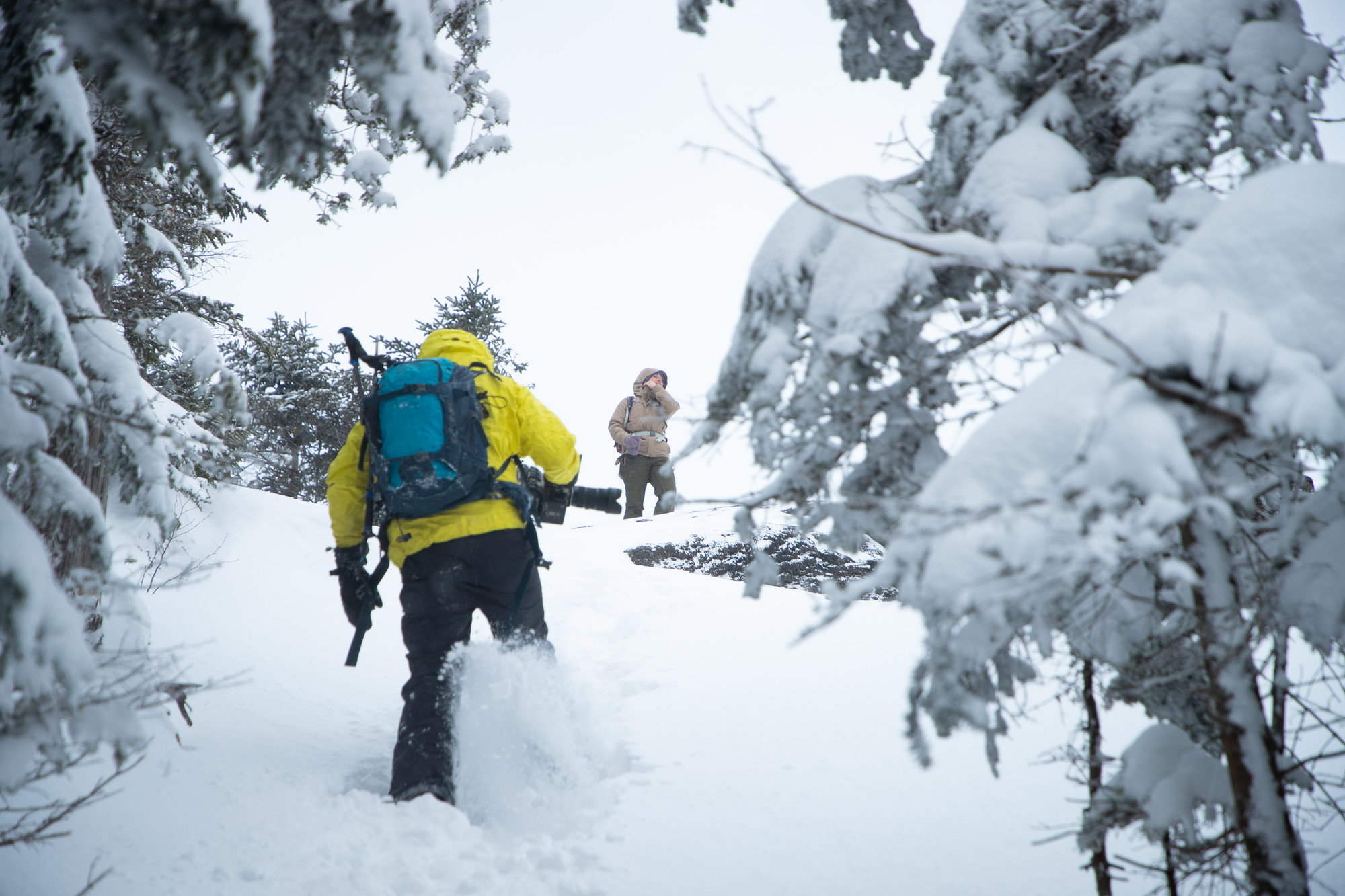
2. Research the trail
You don’t need to know the trail like the back of your hand, but you should be familiar with the route you will be hiking. Study maps before you head out and take note of trail junctions and intersections to avoid getting turned around. In addition to knowing the distance of the trail, find out how much elevation gain there is and if it is gradual or comes in steep bursts. Look into trail features like river crossings and slides and be mindful of how recent weather might affect those details. Heavy precipitation or recent snowmelt may swell rivers, making them impassable unless there are sturdy bridges in place. Snow and ice accumulations might make scaling rocky slides exceptionally difficult. It’s important to note that, while a lot of work goes into maintaining the High Peak trails, these mountains are deep in the back country and trail damage might not be found and fixed quickly, so be prepared for trail disruptions.
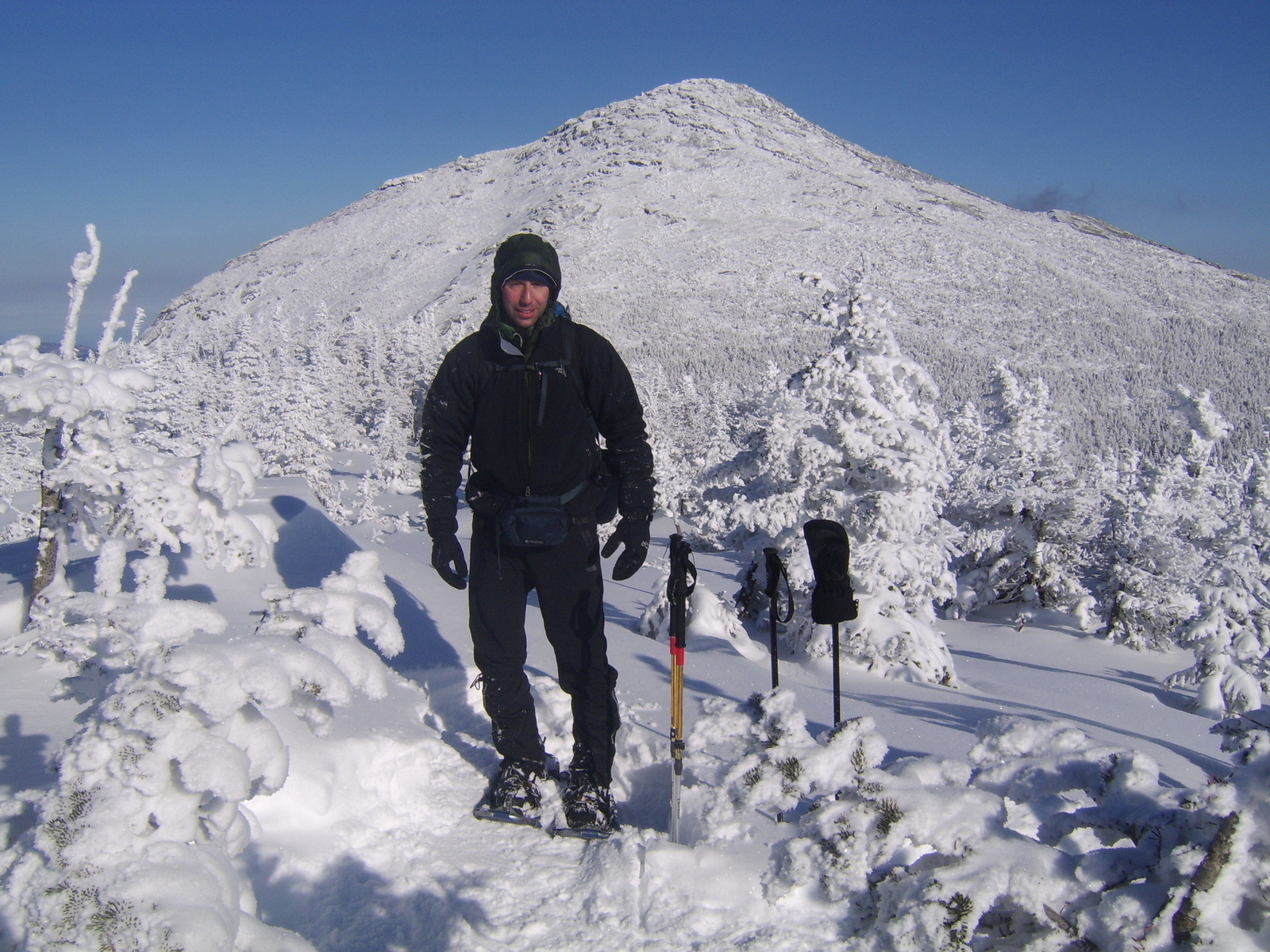
3. Come prepared
Proper preparation is one of the best ways to avoid a bad experience on the trail. It starts with your wardrobe. Wear warm, moisture-wicking, non-cotton base layers, insulating mid-layers, waterproof outer layers, wool socks and waterproof boots, a hat, mittens or gloves, and a facemask or buff. Bring extra base layers, socks, hats, and mittens in case you sweat or get wet. Then there’s the gear. Pack a comfortable, sturdy pack with:
- Plenty of food and water in insulated containers
- Snowshoes and crampons or microspikes
- Headlamp and extra batteries
- First aid kit and a dose of prescription medicines
- Maps of the area and a compass or GPS system
- Fire-starting kit
- Emergency kit including a space blanket, whistle, signal mirror, and emergency shelter
- A way to melt snow or ice and a water filtration device
- Handwarmers
- Multi-tool or pocketknife
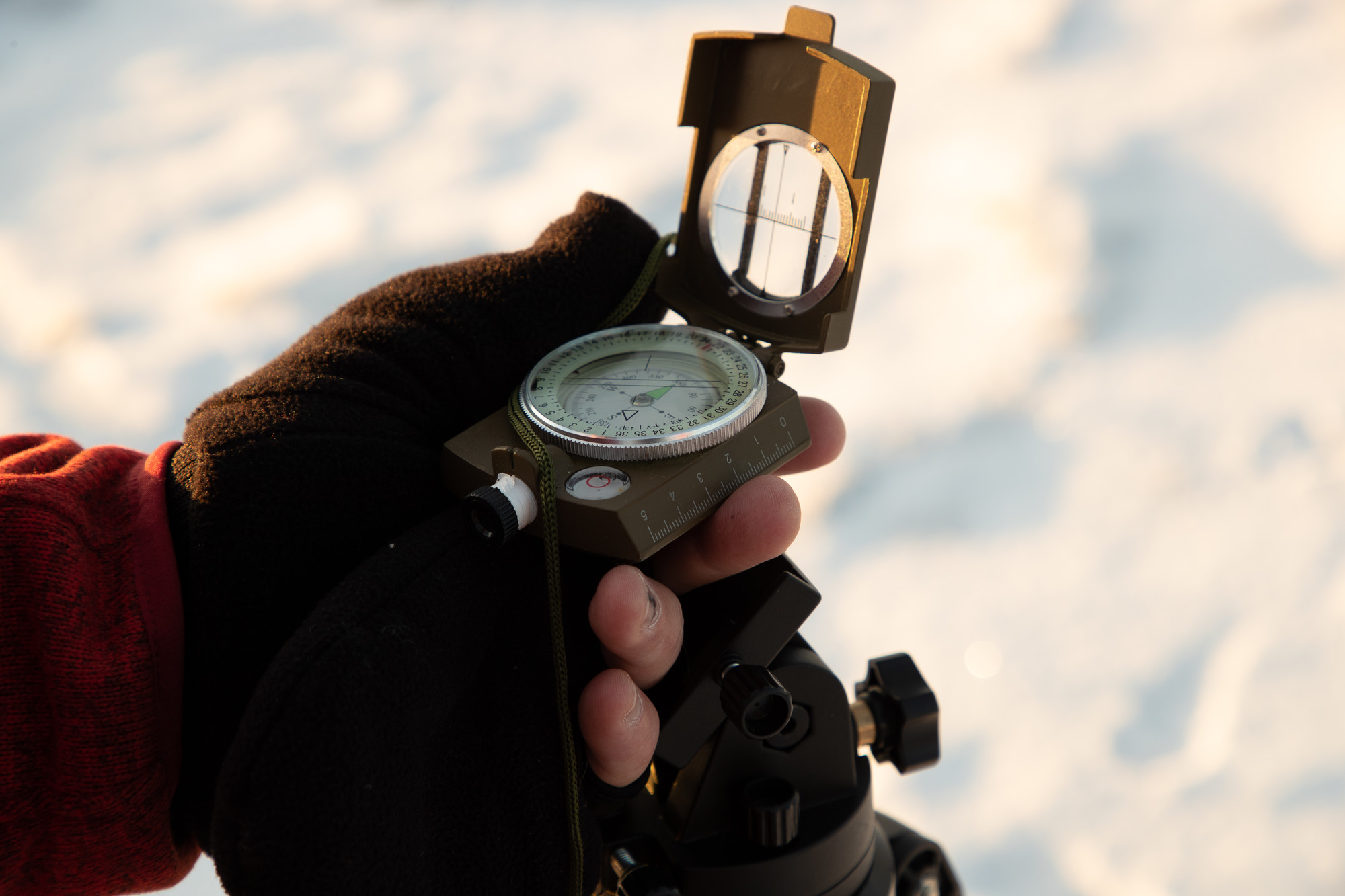
Bringing this gear does no good if you don’t know how to use it. Practice using your gear at home before you take it on a hike.
Preparation also includes your research. In addition to researching the trail itself, check the weather for the day of your hike and the next day so you know what kinds of weather you might encounter if your hike runs long. Winter weather can change suddenly, especially on summits, so be prepared for variable conditions. Know when the sun rises and sets and properly prepare your body with good food, plenty of water, and lots of rest.
4. Hike with a friend
Hiking alone does offer a special kind of solitary nature experience, but the added safety of hiking with a partner outweighs the benefits of a solo adventure. If you’re injured, a buddy can administer first aid and/or send for help. If you get lost, having a friend will keep you calmer than if you were alone. In the unfortunate event that you end up spending a night in the woods, shared body heat is a great way to stay warm. Hiking with a partner also helps you avoid one of the most dangerous of winter hiking encounters – hypothermia. Hypothermia can be difficult to self-diagnose, so keep an eye on hiking partners and raise the alarm if you notice symptoms like shivering, fatigue, confusion, slurred speech, shallow breathing, or loss of consciousness. If you notice someone showing signs of hypothermia, get the person into warm, dry clothes immediately and then get them to a warm location.
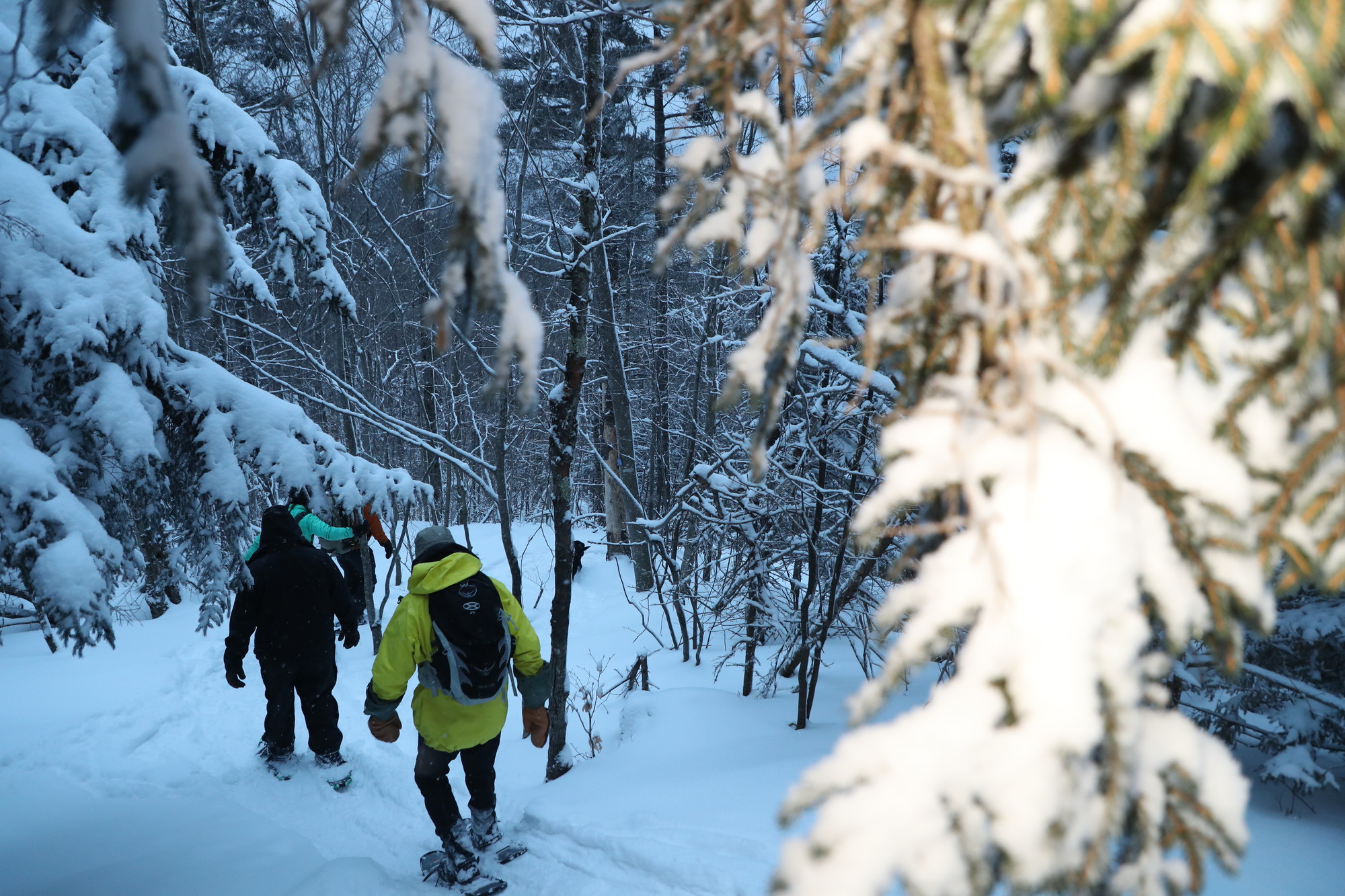
5. Leave No Trace
The Leave No Trace Center for Outdoor Ethics shares seven principles that can guide your outdoor experiences in a way that protects both you and the wild places where you recreate. These principles include:
- Plan ahead and prepare
- Travel and camp on durable surfaces
- Dispose of waste properly
- Leave what you find
- Minimize campfire impacts
- Respect wildlife
- Be considerate of other visitors
These seven principles apply to hiking (and all other forms of outdoor recreation) year-round with special considerations for each season. In the winter, planning and preparing is especially important for your safety. Respecting wildlife by keeping your distance and never feeding them actually helps animals survive the harsh winters. Hikers on snowshoes and skiers often travel the same trails in the winter. Be considerate of all users by keeping snowshoe tracks to one side and ski tracks on the other and always wear your snowshoes in deep snow. Bare boots can leave large holes known as post-holes in the snow, creating tripping hazards for other hikers and skiers.
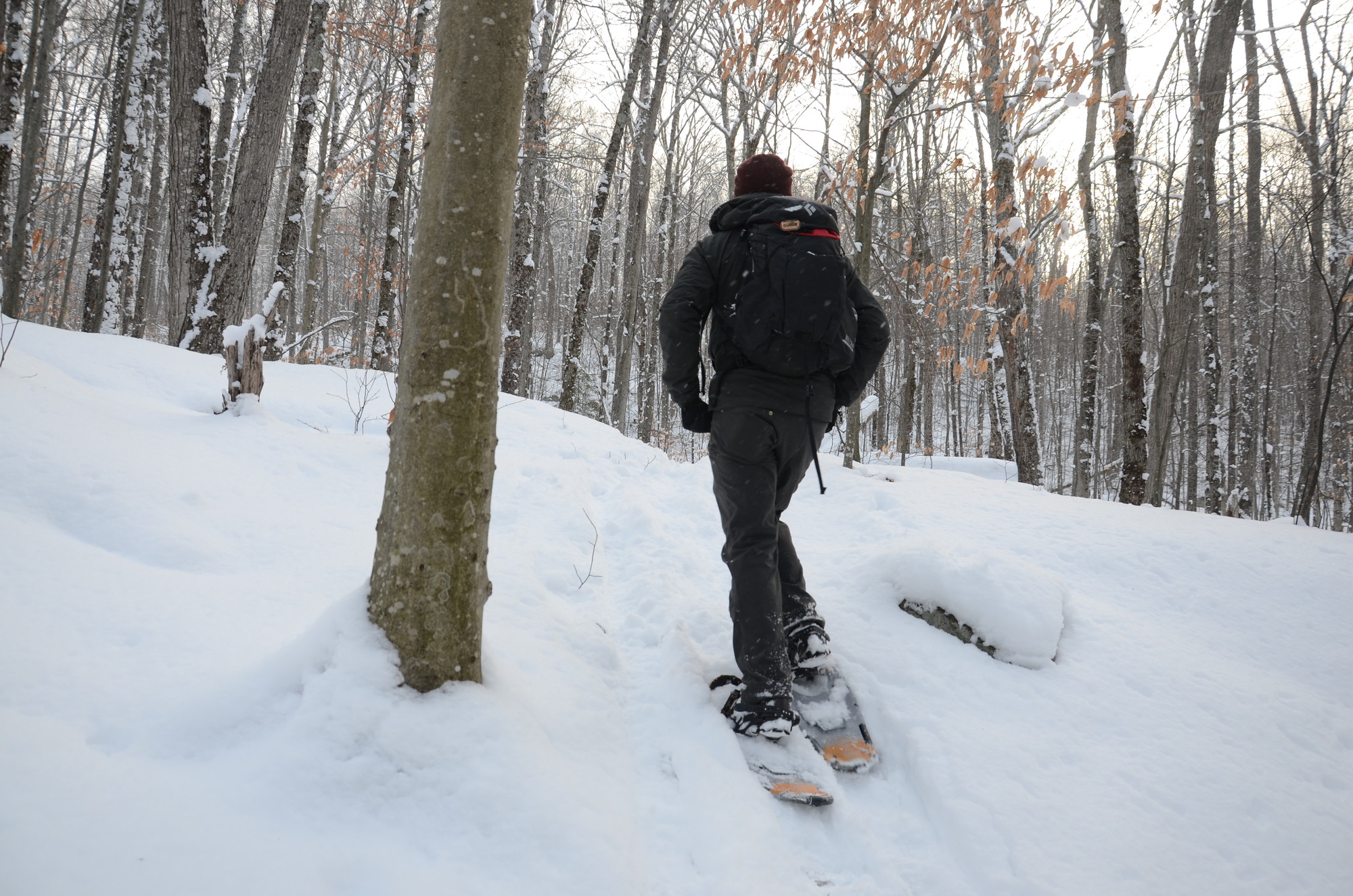
6. Don’t Hesitate to Turn Around
Perhaps the most important thing to remember when hiking in the winter is that your safety is more important than the summit. No matter what the hike – from a short jaunt up a small mountain to a full day trek up a High Peak – never hesitate to turn around if you feel unprepared, ill-equipped, think you might be lost, aren’t feeling well, or even if the hike is taking significantly longer than expected. The mountain will always be there, and you can come back and try again another day.
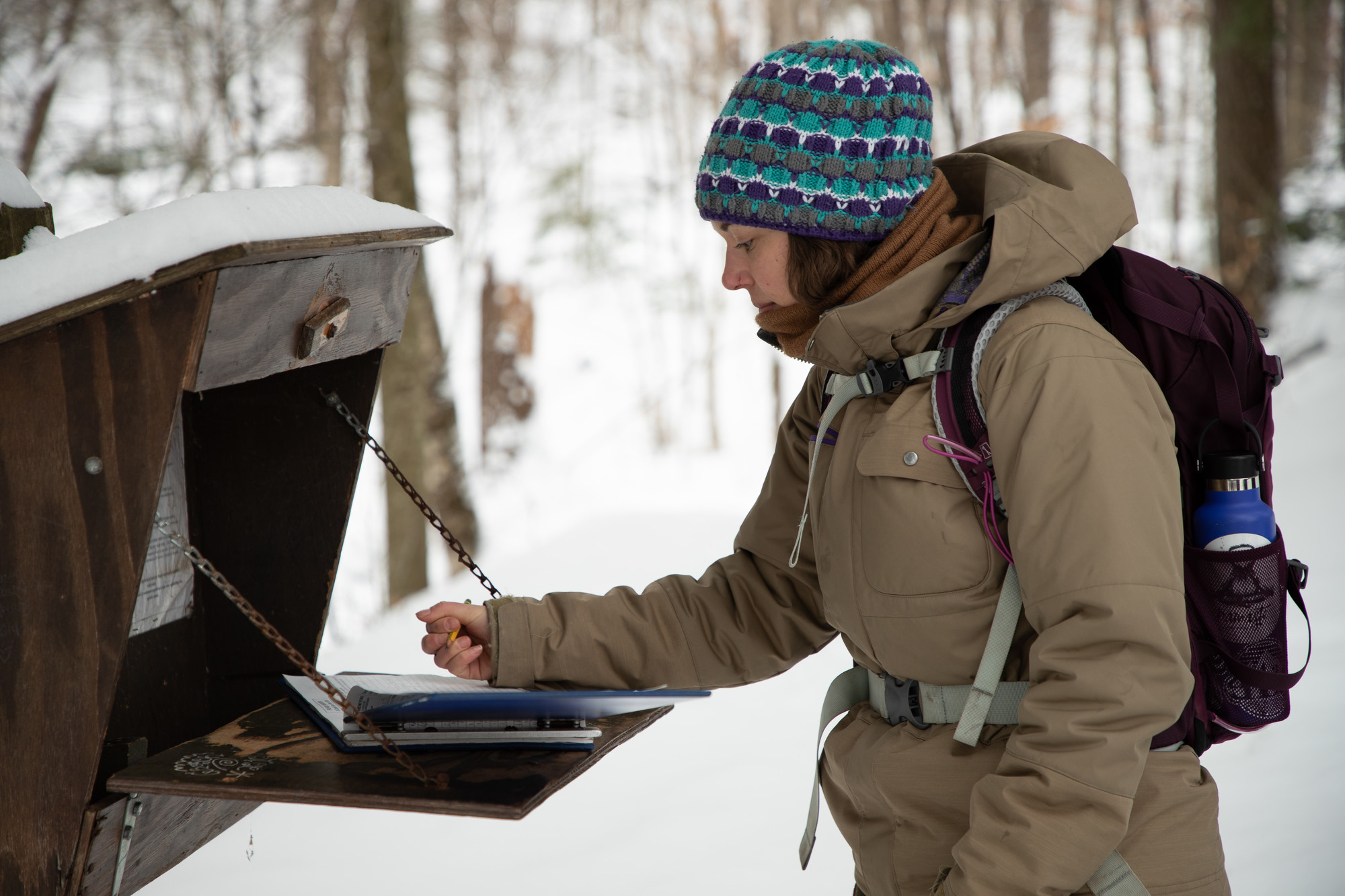
Winter in the High Peaks is a magical time. The snow-covered mountains and trail glisten, the forest is quiet, and the cold air is invigorating. Hiking this region in the winter can be a truly special experience so long as you choose the right hike, research the trail, come prepared, and bring a buddy. If the High Peaks themselves seem a bit out of reach right now, don’t worry! There are plenty of other magnificent winter hikes to explore. Wherever you choose to hike in the Schroon Lake Region, there is always a hot meal and cozy bed waiting at the end of the day. Start planning your winter adventure today!


